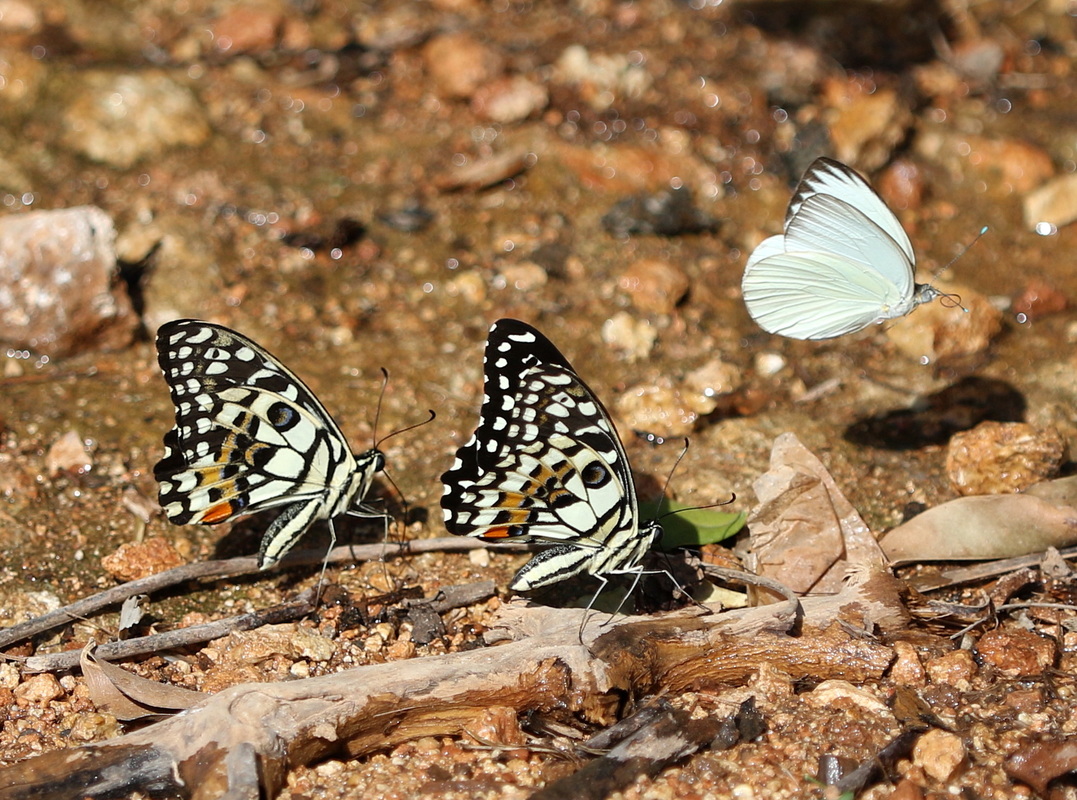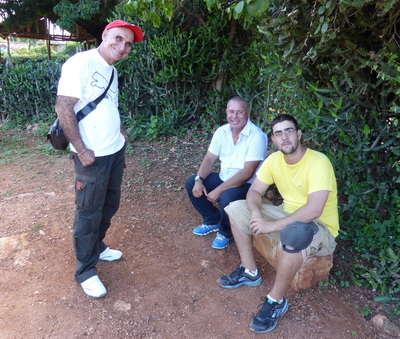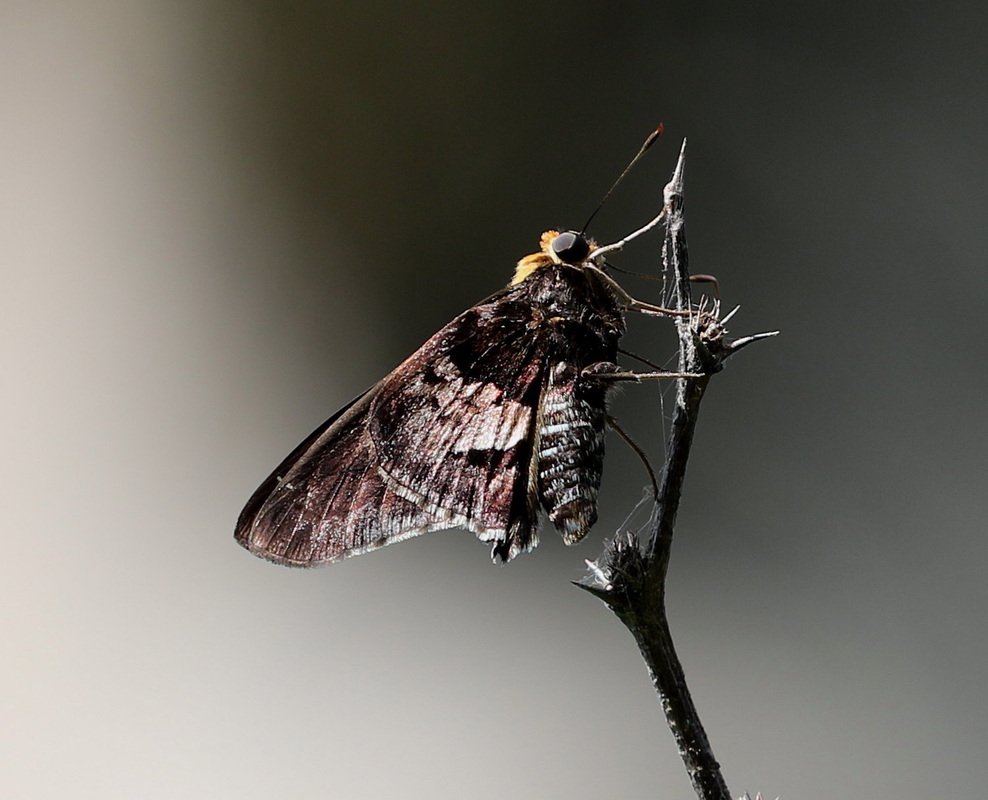|
We had agreed to meet up with Rayner and his family today who were staying in Holguin for a few days so we picked up him and his little daughter and then drove to Gibara to see a lepidopterist friend of Rayner's called Féliberto (Félix) who he had met a couple of months previously in the Sierra Maestra. Gibara is on the coast north of Holguin and about a one and a half hours drive west of our hotel. Félix and his friend Sandy took us on a walk along a rough track leading south of Gibara that, he told us, was once the only road to Holguin and was once the 'slave road' along which slaves were taken from their landing point on the coast to Holguin. Today the only people using it were us and the occasional person on a horse. It was hot and by now it was late morning with little shade but there were plenty of butterflies though most things were very active. Most butterflies were either taking moisture from the occasional damp patch on the road or from the plentiful pink flowers of Antigonon leptopus in the hedgerow. We had not seen this plant anywhere other than the area around Gibara and it proved a magnet for several species of skippers and Pierids notably Yellow-angled Sulphur Anteos maerula and several female Lyside Sulphur Kricogonia lyside. We had only seen the latter once before as as a 'fly by' so it was nice to see them up close and note the yellow base of the forewings. Félix said that they sometimes occur in hundreds of thousands moving through the area - now that I would like to see! The rarer and endemic Cuban Sulphur Kricogonia cabrerai also occurs here in small numbers though unfortunately we didn't see it today. We did see the beautiful day-flying moth Urainia boisduvalii that had us fooled on our first trip to Cuba as we at first thought it was some sort of swallowtail until we eventually saw one settled. Félix and Sandy proved remarkably good at finding larvae and they had soon found several larvae of different sizes of Cuban Longtail Chioides marmorosa on the foodplant Hebestigma cubense. The larvae at first live in a shelter under the cut edge of a leaf that they fold under using silk, but later live in very tough silk shelters that birds must find it very hard to open. We only found larvae on bushes in the shade - in fact thinking about it this seemed to apply to just about all the larvae of whatever species that we found. Even the ones found feeding on grass were found in predominately shade. There were plenty of Pierids taking moisture on the ground largely Great Southern White Ascia monuste and Sleepy Orange Abaeis nicippe but the photo on the right shows five species together. Starting from the right (and ignoring the one at the back facing the camera) they are Bush Sulphur Pyrisitia dina, Sleepy Orange Abaeis nicippe, Mimosa Yellow Pyrisitia nise, Little Yellow Pyrisitia lisa (in front) and Smudged Yellow Eurema lucina. Note the smaller size and greater extent of black on the forewing of P. nise compared to P. dina. And one of the Great Southern Whites was persistently buzzing two Lime Swallowtail Papilio demoleus. As we walked back towards the car I spotted a Skipper sitting about 12 feet up on a dry twig on top of the hedge. This proved to be a new species for us - a Cuban Mercurial Skipper Proteides mercurius with its bright golden head and thorax. It was constantly chasing off other insects and returning to the same perch. Our thanks to Félix and Sandy, and to our driver Orlando for a great day out - shame that we had to leave Rayner on the beach with his little daughter! Our especial thanks also go to Félix's wife Paquita who had cooked us the most splendid meal when we got back! This place has such potential and we felt we had only just scratched the surface so we had to come back, and so arranged to do so in a few days time.
0 Comments
Leave a Reply. |
Welcome to our Blog
Here we will post interesting news about what we and others have seen in Cuba. Archives
July 2024
Categories |

















 RSS Feed
RSS Feed